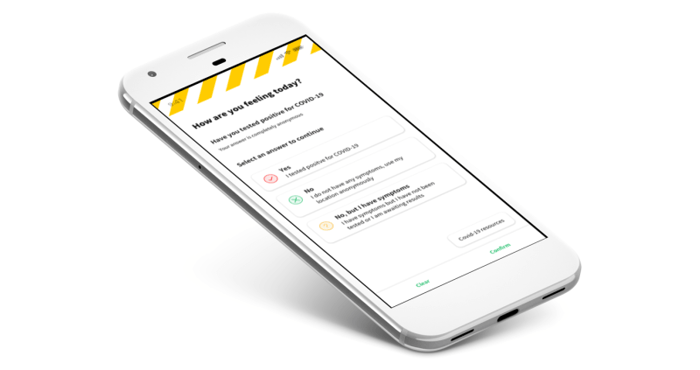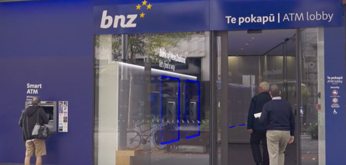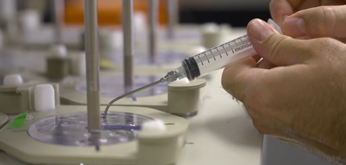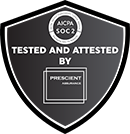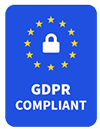4th May 2020
Contact tracing is an incredibly important part of containing COVID-19 – it allows your health and safety or human resources team to track down those who have been in contact with an infected person, so they can be quarantined to prevent further spread.
While record-keeping sounds fairly simple, the reality is that doing it well – and in a way that doesn’t hamper normal business operations – is easier said than done.
Paper-based record-keeping leaves gaps
A paper-based recording system is perhaps the simplest to implement – it’s cheap and requires no special technology – but it can quickly become almost impossible to maintain. Accurate contact tracing needs multiple data points such as date and time, location, people involved and contact details. At best, this time-consuming administrative task will take staff away from core operations and reduce staff morale. At worst, the record-keeping simply won’t be done well – or at all – leaving you at risk of noncompliance. Unless they’re completed straight away, paper-based systems also rely on notoriously flawed memories, which means that even with the best will in the world, it’s unlikely your records will be accurate or complete.
And, while record-keeping is the legislated requirement, ideally companies will take immediate action if they spot an outbreak. If contact records are buried in paper, your team will lose precious time tracking down all those at risk, allowing for further spread.
Choosing the right technology for contact tracing
As with many admin-heavy tasks, technology solves most of these issues. While governments are rushing to release apps for public use – as Australia has just done – businesses can’t rely on these to meet their contract tracing requirements. These apps keep the information with the user, rather than being centrally managed by the business, which means teams will have no way of knowing if an infected or exposed staff member is still coming onto site. A contact-tracing app rolled out specifically for your business will give you visibility over workers’ movements and give you the information you need to quickly contain any risk of spread.
Here we discuss the functionality seen in common tech solutions, the limitations and how some solutions attempt to work around them.
Patchy coverage
In an ideal world, the technology used for tracing would be consistent nationwide, so any contact between individuals would be instantly recorded. The reality is, we’re far from that – there’s no one app or one kind of device that everyone has access to and agrees to use correctly.
Management within companies can ensure staff have access to and use technology correctly – for example, those staff who don’t use smartphones will need to be supplied with one. These measures would be sufficient for businesses that operate with minimal or no contact with the public. Those that require public contact will need to manually log the time, date and people their staff interact with outside of their organisation, including clients and contractors. Good systems should make this easy to do within the app, rather than requiring a paper-based record. ecoPortal’s automatic data capture goes one step further, while the COVID-19 suite of registers for activities like contractor declarations and managing visitors complete the picture.
Privacy problems
Contact-tracing apps, by their nature, track the movements of users. This has deep implications for users’ privacy – even if they opt-in, there’s too much opportunity for storing and using this data for other means. The European Union asked Apple and Google to remove from their stores any tracing apps that violate users’ privacy. Detailed guidance from the EU lawmakers states that any tracing apps used should include “automated…deletion of all remaining personal data and proximity information, as soon as the crisis is over.”
Any technology you implement to trace your team should offer this assurance.
Of course, there are apps built to be more sensitive to these issues. For example, ecoPortal’s new contact-tracing functionality anonymises user location, which is stored only temporarily. The ecoPortal Connect app also clearly notifies users when they’re being tracked and ensures they understand what will happen if they ever self-identify as showing symptoms of or testing positive for COVID-19.
Accuracy issues
The GPS capability in smartphones is a great platform for a contact tracing solution. It does however come with some accuracy issues around location, which in NZ, can have an error of around 5m. This is affected by a number of factors including the kind of device and the environment. Bluetooth tracking offers more accurate proximity tracking, but can’t provide the visibility of location history as well as movements to the level of GPS tracking. The ecoPortal Connect app utilises GPS for contact tracing, so you have the information you need immediately to hand, so you can identify anyone else who may have been in the vicinity or isolate a location until it has been sanitised.
The development of technology has always been about solving problems, making jobs faster and easier and businesses more efficient.
Although there are ways to accomplish contact tracing through established technology, they do come with limitations – and any software solution you choose should have built-in workarounds to make them as accurate, safe and widely used as possible. Choosing well will mean your company is poised to get back up and running with a minimum of administrative effort, while staying compliant, protecting your people and helping New Zealand beat COVID-19.
About ecoPortal
An enterprise risk-and-sustainability management platform, ecoPortal is already facilitating the COVID-19 health and safety requirements of some of New Zealand’s largest brands. Our COVID-19 suite and our ecoPortal Connect app’s contact tracing functionality amplify those efforts, ensuring compliance with government contact-tracing requirements. Along with our basic hazard and incident reporting, this tool is currently free to any business with more than 50 full-time employees.
Visit ecoPortal’s website if you would like to find out more about the ecoPortal Connect app with contact tracing functionality.
